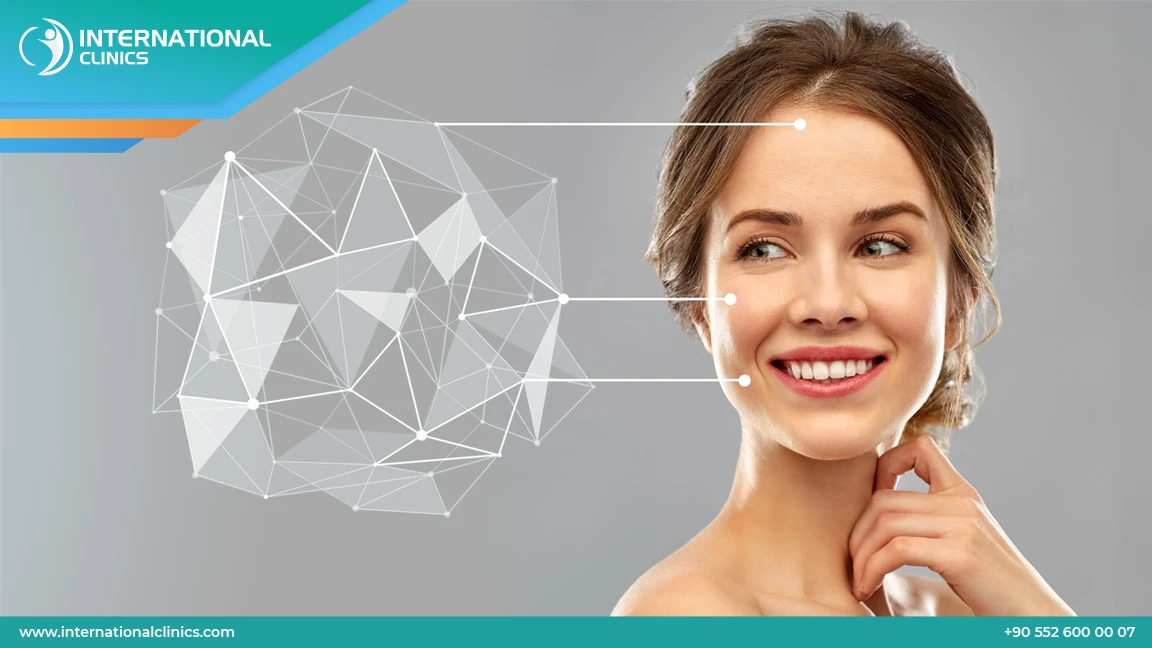- The Foundations of Plastic Surgery
- The Art and Science of Cosmetic Surgery
- Types of Cosmetic Surgery
- Common Plastic and Cosmetic Surgery Procedures
- Body Lift Procedures
- Facelift Surgery:
- Thigh Lift Surgery:
- Neck Lift Surgery:
- Brow Lift Surgery:
- Forehead Lift Surgery:
- Blepharoplasty (Eyelid Surgery):
- Brachioplasty (Arm Lift Surgery):
- Back Lift Surgery:
- Breast Lift Surgery:
- Butt Lift Surgery:
- Abdominoplasty (Tummy Tuck Surgery):
- The Procedures for Breast
- Otoplasty Surgery
- Rhinoplasty Surgery
- Cosmetic dentistry
- Dental Implant Surgery
- Hollywood Smile
- Hair Transplant Surgery
- Beard Transplant Surgery
- Labiaplasty Surgery
- Penis Plastic Surgery
- Penis enlargement
- Impotence
- Obesity and Fat Reduction Procedures
- Liposuction
- Liposuction Types
- Gynecomastia Surgery
- Leg Liposuction
- Back Liposuction
- Flank Liposuction
- Calf Liposuction
- Upper Body Liposuction
- Submental Liposuction
- Hip Liposuction
- Jawline/Jowl Liposuction
- Chin Liposuction
- Neck Liposuction
- Buffalo Hump Liposuction
- Cheek Liposuction
- Arm Liposuction
- Upper Arm Liposuction
- Upper Arm Fold Liposuction
- Forearm Liposuction
- Upper Breast Liposuction
- Upper Abdomen Liposuction
- Lower Abdomen Liposuction
- Breast Liposuction
- Sacrum Liposuction
- Buttocks Liposuction
- Outer Thighs Liposuction
- Inner Thighs Liposuction
- Back of Thighs Liposuction
- Front of Thigh Liposuction
- Knee Liposuction
- Inner Knees Liposuction
- Calves Liposuction
- Front of Knees Liposuction
- Ankles Liposuction
- Facial Liposuction
- Body Shaping (Body sculpting surgery)
- Gastric Sleeve Surgery
- Gastric Bypass Surgery
- Duodenal Switch Surgery
- Non-surgical procedures
- Stomach Botox
- Gastric Balloon
- Gastric Pill Balloon
- Choosing the Right Clinic and Surgeon for Plastic Surgery
- Cost Analysis of Plastic Surgery
- Pre-Surgery Preparations and Consultations
- The Surgical Procedure and Hospital Stay
- Recovery and Aftercare
- Post-Op Monitoring
- Follow-Up Appointments
- Therapeutic Rehabilitation
- Nutritional Guidance
- Risks and Safety Measures
- Patient Testimonials and Success Stories
- Conclusion
Plastic surgery is a rapidly expanded and promising field that requires great precision and expertise to produce optimal results.
The techniques and technologies of plastic surgery have notably advanced over the years, which means that the ability to sculpt and shape the human body has become easier, safer, and even cheaper, especially in Turkey.
However, this potential can only be realized in the hands of a well-trained and experienced plastic surgeon who has mastered the art of different plastic surgeries such as liposuction, body life, and facelift.
Next, we’re going to thoroughly explore the importance of precision and expertise across the full spectrum of plastic surgery.
The Foundations of Plastic Surgery

Plastic surgery has its roots in reconstructive techniques, which are dedicated to repairing deformations or disfigurements and improving function.
The term "plastic" originally comes from the Greek word "plastikos," meaning to mold or form.
Early pioneers of plastic surgery focused on reconstructing noses, ears, and lips that have been damaged due to trauma or disease.
Over time, the techniques evolved from simple tissue repairs to complex flap and graft procedures. Precision and planning were required even in rudimentary reconstructive surgeries to minimize scarring and optimize aesthetic outcomes.
The advent of modern anesthesia and antiseptic practices in the 19th century allowed more advanced reconstructive procedures to be performed safely.
World War I spurred further progress in plastic surgery as surgeons treated devastating facial and body injuries inflicted by new weapons technology.
Their innovations formed the foundation of modern plastic and reconstructive surgery.
Around this time, plastic surgery also began branching into elective aesthetic procedures such as facelifts, breast augmentations, and liposuction.
The line between reconstructive and cosmetic surgery can be blurry, but both require flawless technique and artistic vision from the surgeon.
The Art and Science of Cosmetic Surgery
Cosmetic plastic surgery aims to enhance a patients natural aesthetics through surgical or minimally invasive techniques.
Many doctors describe it as a “blend of medical science and artistic creativity”. The surgeon must, however, have a deep understanding of anatomy and physiology to visualize the possibilities and limitations of any plastic procedure.
They must also possess an aesthetic eye, using techniques like suturing and sculpting to manipulate tissues into more desirable shapes and profiles.
The modification of the face, breasts, abdomen, buttocks, and other areas requires a balanced approach to prevent overcorrections or unwanted results.
There is little room for error in pursuit of the optimal aesthetic outcome.
Precision is extremely needed in procedures like rhinoplasty, where millimeters can separate a refined, proportional nose from an unbalanced look.
Expertise is also required to marry the left and right sides into symmetry. Attention to form, balance, and proportions throughout the body must guide the work of an expert cosmetic surgeon.
Hence, they must master a variety of techniques to address each patients unique anatomical canvas. Ultimately, elite cosmetic surgery is the culmination of scientific discipline and artistic flair.
Types of Cosmetic Surgery
There are a variety of cosmetic surgery procedures that enhance different parts of the body. Keep in mind that we’re talking here about “surgical” procedures of an invasive nature.
These procedures, of course, require precision and expertise to sculpt natural, aesthetically pleasing results. We can divide these procedures into the following categories:
- Facial procedures: These include facelifts, blepharoplasty (eyelid surgery), brow lifts, rhinoplasty (nose reshaping), otoplasty (ear surgery), chin augmentation, cheek augmentation, and lip augmentation or reduction.
- Breast procedures: Breast augmentation, breast lifts, breast reduction, and male breast reduction refine the shape, size, and position of the breasts.
- Body contouring (sculpting): Procedures like liposuction, tummy tucks, and body lifts remove excess fat while tightening loose skin and muscles. Body symmetry is a major goal of body sculpting, and the areas may involve butt lifts, thigh lifts, back lift, arm lifts, and calf reshaping procedures.
Non-surgical treatments like Botox and dermal fillers add volume, smooth lines and wrinkles, and reshape facial structures with an extremely fine touch but without using the surgical knife or blade.
Common Plastic and Cosmetic Surgery Procedures
Clinics and hospitals that provide plastic surgeries often offer the following procedures:
Body Lift Procedures
Body lift procedures usually emphasize contouring or “lifting” specific body parts such as the back or arms.
Facelift Surgery:
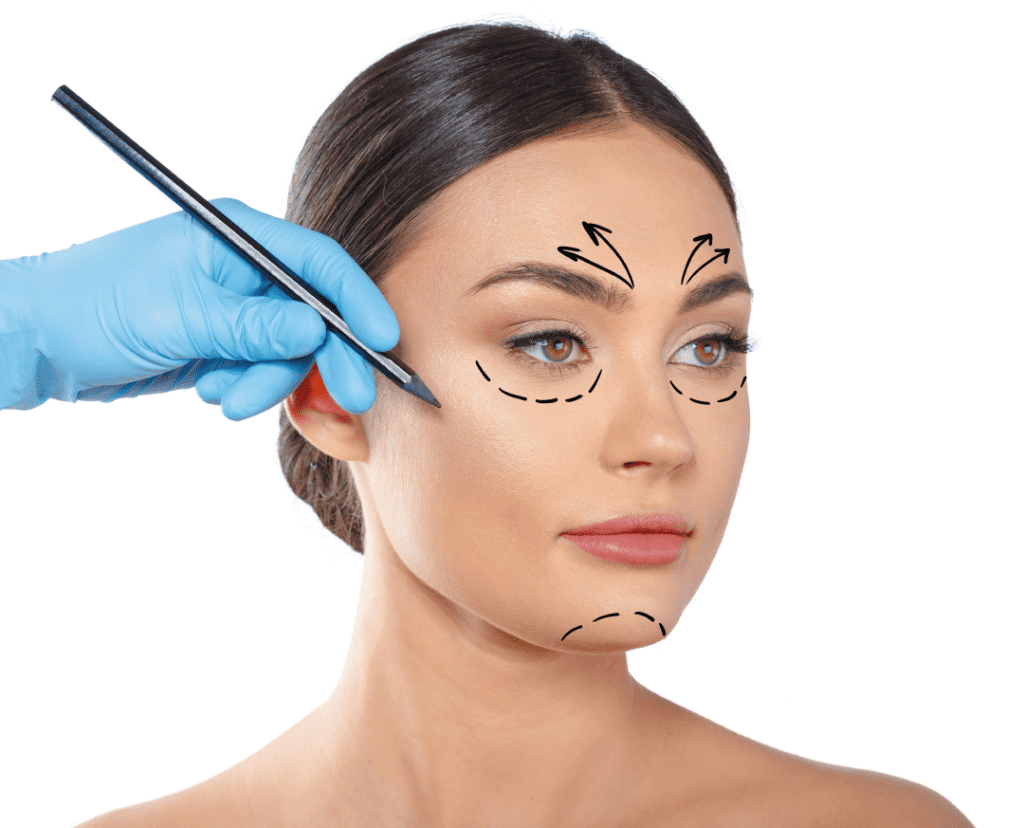
A surgical procedure to tighten and lift the skin of the face and neck in particular. This involves making incisions around the ear, hairline, and neck and repositioning the skin, fat, and muscles of the face. It can help reduce signs of aging like sagging skin, jowls, and deep folds.
Thigh Lift Surgery:
This is to remove excess skin and fat from the thighs. Incisions are made in the groin area and sometimes on the outer thigh. Excess skin and fat are removed. This can help contour the thighs when weight loss leaves behind loose skin.
Neck Lift Surgery:
Surgeons recommend this procedure to tighten loose skin and reduce fat deposits in the neck. Incisions are made under the chin and behind the ears. The platysma muscles are tightened, and excess fat is removed for a smoother, tighter neckline.
Brow Lift Surgery:
This is the surgical solution to lift the eyebrows and smooth forehead wrinkles. Incisions are made along the hairline, and underlying muscle and tissue are repositioned to lift the brows. This can correct a sagging brow line.
Forehead Lift Surgery:
Some clinics offer this procedure to lift the forehead skin and smooth wrinkles. Incisions are made along the hairline to lift the forehead tissue, remove excess skin, and tighten muscles for a smoother appearance.
Blepharoplasty (Eyelid Surgery):
Eyelid surgery aims at removing excess skin, muscle, and fat from the eyelids. Incisions are made along the natural creases of the eyelids to remove excess tissue. This can correct sagging lids and improve vision obstructed by excess skin.
Brachioplasty (Arm Lift Surgery):
To tighten and reshape the under portion of the upper arm, some surgeons suggest the arm lift procedure. An incision is made from the armpit to the elbow, and excess skin and fat are removed. This helps tighten loose, sagging skin in the upper arms.
Back Lift Surgery:
Removing loose, excess skin on the back is totally possible with a back lift. Incisions are made along the bra line and beneath the buttocks to tighten the skin. This can create a smoother, firmer back profile.
Breast Lift Surgery:
This popular option can raise, reshape, and firm the breasts. Excess skin is removed, breast tissue lifted, and the nipple/areola repositioned for perkier breasts. This can correct sagging breasts.
Butt Lift Surgery:
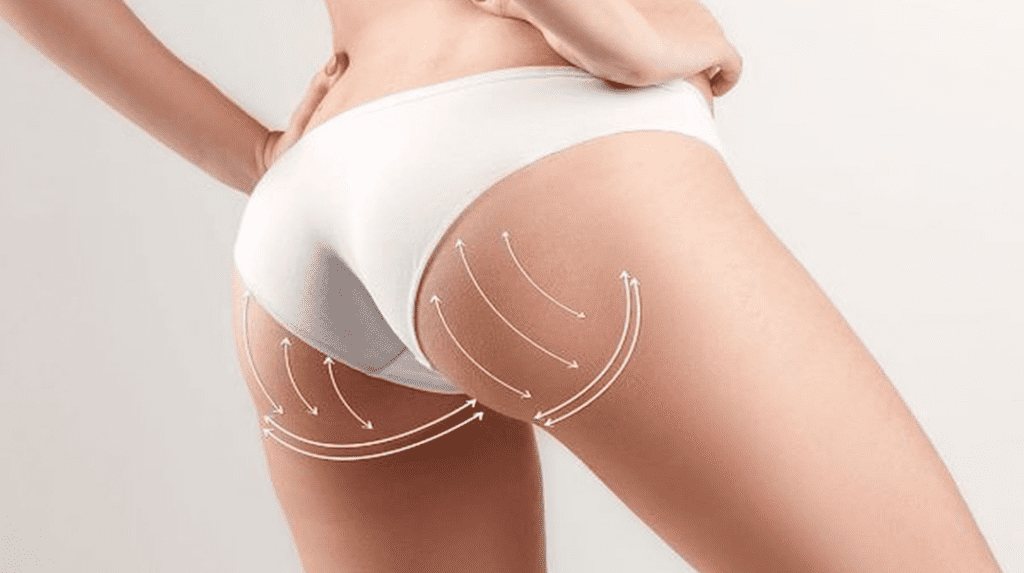
This is a surgical procedure to tighten, lift, and reshape the buttocks. Excess skin is removed, and the remaining tissue is pulled taut. This can correct sagging, flatten, and lift the rear. The Brazilian Butt Lift Surgery (BBL) is a special type that relies on fat transferred from other parts of the body.
Abdominoplasty (Tummy Tuck Surgery):
People choose tummy tucks to tighten loose abdominal skin and muscles. Horizontal incisions are made from hip to hip, excess skin is removed, and abdominal muscles are tightened. This helps flatten the stomach and remove loose, sagging skin.
The Procedures for Breast
The breasts can be enlarged or reduced in size. Most women, however, prefer the enlargement procedure over the reduction procedure.
- Breast Augmentation:
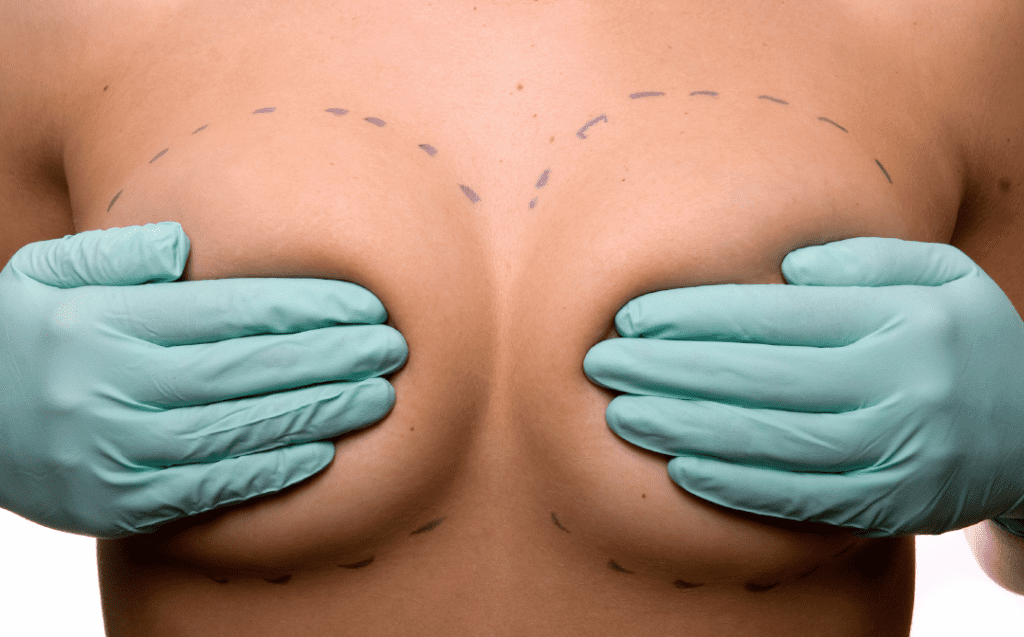
The augmentation procedure aims at increasing breast size using implants. An incision is made under the breast, armpit, or around the nipple to insert and position the implant. This enlarges small or uneven breasts.
- Breast Reduction:
The reduction procedure, on the opposite side, reduces the size of overly large breasts. The surgeon makes incisions around the areola, down the breast crease, and horizontally below the breast. Excess tissue, fat, and skin are removed and the remaining tissue is reshaped. This relieves discomfort from heavy breasts.
Otoplasty Surgery
Otoplasty is a cosmetic surgery to pin back protruding ears and reshape the ear structure, commonly performed on children. The surgeon makes incisions behind the ear to remove cartilage and tissue.
The remaining cartilage is sculpted into a more natural shape and position. Stitches placed behind the ear hold the new ear shape in place as it heals. Otoplasty can treat conditions like lop ear, cup ear, and prominent ears.
Rhinoplasty Surgery
Rhinoplasty (or nose job) reshapes the nose by altering bone and cartilage. The surgeon makes incisions inside the nostrils or at the base of the nose to access the bone and cartilage.
Then, they reshape, remove, or rearrange these structures to change nose size, alter the bridge, adjust the tip, or improve nasal symmetry. Rhinoplasty can address cosmetic concerns or respiratory issues.
Cosmetic dentistry
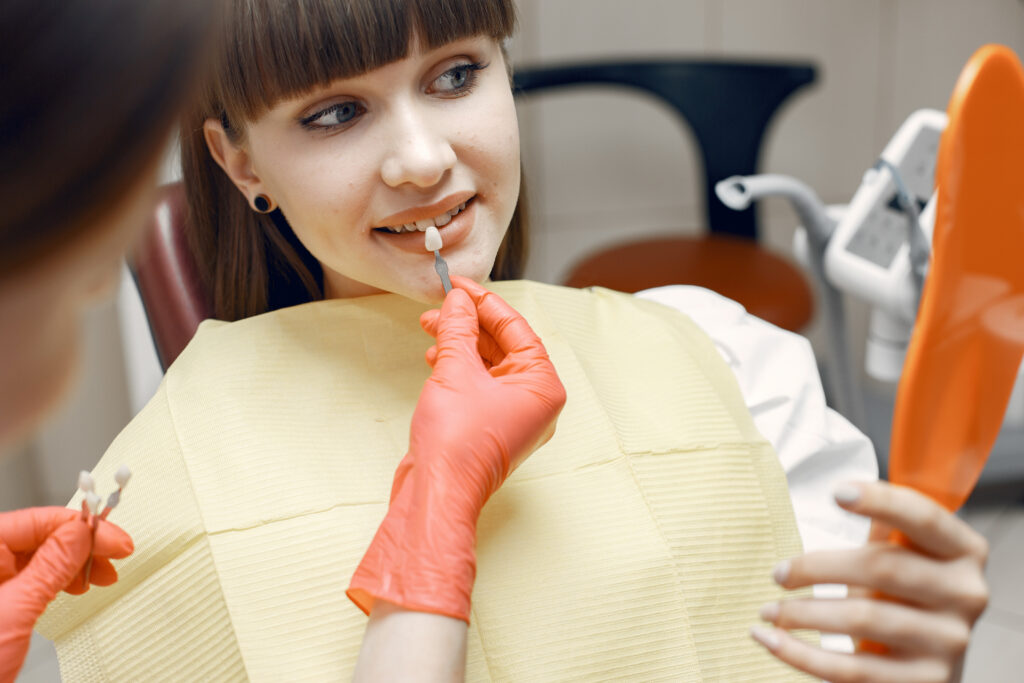
Cosmetic dentistry is a very ramified specialty, but it mostly aims at improving the general aesthetics of the teeth and gums.
Dental Implant Surgery
Dental implant surgery is an effective way to place artificial tooth roots made of titanium into the jawbone to hold a replacement tooth or bridge. The titanium implant fuses with the jawbone through osseointegration.
A crown is later placed on the abutment portion above the gumline to create a natural-looking prosthetic tooth. Implants provide stability and durability and allow near-normal function.
Hollywood Smile
Hollywood smile is a very popular method to create an enhanced, bright "celebrity" smile using cosmetic dentistry treatments. Veneers, dental crowns, or bonding are used to straighten, whiten, and reshape the teeth.
Tooth-colored fillings repair chips and gaps. Teeth whitening further brightens the smile. The combination achieves a flawless, natural-looking smile.
Hair Transplant Surgery
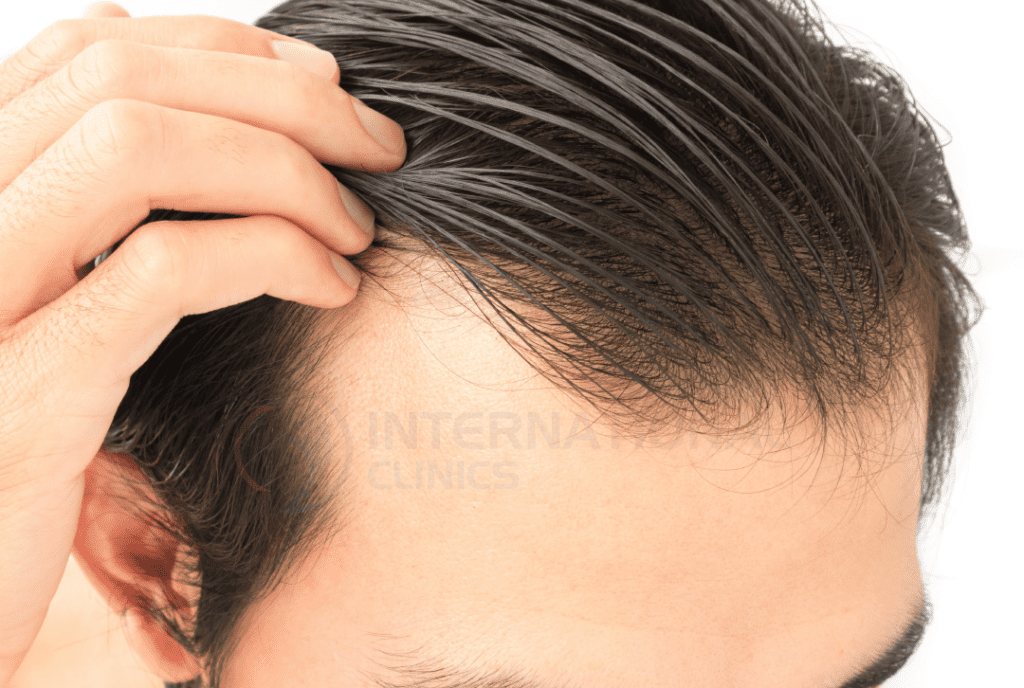
Hair transplant surgery is done simply by moving hair follicles from fuller areas of the scalp to balding areas. Techniques such as follicular unit extraction (FUE) or follicular unit transplantation (FUT) are used to harvest follicles which are then implanted into the scalp.
As these grafted follicles grow, they help restore a fuller head of hair. Hair transplants are a permanent solution for male or female pattern baldness.
Beard Transplant Surgery
Beard transplant surgery is a great method to transplant hair follicles from the scalp to the face to create or fill a beard. FUE is typically used to remove follicular units which are implanted into the beard area one by one.
As transplanted hair takes root and regrows, it gradually fills in a natural-looking beard. This procedure can help men who are unable to grow full facial hair.
Labiaplasty Surgery
Labiaplasty is for women who wish to resize or reshape the labia, usually to reduce the size or length of the labia minora. The surgeon makes incisions along the edges of the labia and removes excess tissue.
The remaining labia can then be stitched into a smaller shape if desired. Labiaplasty can relieve physical discomfort or address cosmetic concerns about elongated or uneven labia size.
Penis Plastic Surgery

Penis plastic surgery is what many men ask for to regain confidence in the shape of their genitals.
Penis enlargement
Penis enlargement procedures, as the name suggests, increase penis girth and length. Methods like suspensory ligament release, liposuction of public fat, or injections of dermal fillers can add visual length or thickness.
Implants can also increase girth. While results vary, these techniques may indeed increase length or girth to a noticeable degree.
Impotence
Procedures for impotence aim to treat erectile dysfunction and help patients achieve erections for intercourse. Options like penile implants/prostheses or vascular reconstruction surgeries can allow men to attain erections when other treatments have failed.
Obesity and Fat Reduction Procedures

Fat reduction techniques and obesity procedures sound the same thing at first glance, but that’s not true at all.
Fat reduction aims at “spot” fat reduction. In other words, it’s to remove fat from certain areas, such as the arm, abdomen, or back.
Obesity procedures, on the other hand, aim at general weight loss. Gastric sleeve is one of the most commonly performed obesity procedures.
Liposuction
Liposuction (or lipoplasty) is a cosmetic surgery procedure to remove fat deposits from specific areas of the body, such as the abdomen, hips, thighs, arms, neck, back, calves, and ankles.
Benefits
- Permanently removing fat cells from treated areas
- Improving body contours and proportion
- Tightening loose skin
- Boosting self-confidence
Potential Risks
- Swelling, bruising, numbness, scarring
- Infection, blood clots, fluid buildup
- Uneven results, loose skin if a large volume is removed
Liposuction Types
Gynecomastia Surgery
- Removal of excess breast tissue in men through liposuction, excision, or both
- Improves appearance and self-confidence
- Risks include infection, bleeding, fluid buildup, scarring
Leg Liposuction
- Removal of fat deposits from legs through suctioning
- Reduces fat bulges and contours legs
- Risks include swelling, bruising, numbness, irregularities
Back Liposuction
- Removes fat deposits and improves body contour
- Reduces back fat and enhances shape
- Risks include fluid retention, scarring, nerve damage
Flank Liposuction
- Removes fat from the sides of the torso
- Slims the waistline and enhances curves
- Risks include swelling, bruising, sagging skin
Calf Liposuction
- Reduces excess fat in calves through suctioning
- Slims and sculpts calf muscles
- Risks include swelling, bruising, numbness, lumpiness
Upper Body Liposuction
- Removes fat from upper abs, back, arms, and breasts
- Slims and contours the upper body
- Risks include swelling, bruising, irregularities, numbness
Submental Liposuction
- Removes fat under the chin and neck area
- Eliminates double chin appearance
- Risks include swelling, bruising, nerve damage, irregularities
Hip Liposuction
- Reduces fat deposits around the hip and buttocks
- Reshapes contours and creates an hourglass figure
- Risks include swelling, numbness, sagging skin, scarring
Jawline/Jowl Liposuction
- Removes fat under the chin and along the jawline
- Defines and sculpts a sharper jawline
- Risks include nerve damage, numbness, swelling
Chin Liposuction
- Reduces fat under the chin (and possibly under the neck)
- Creates a slimmer chin profile
- Risks include swelling, bruising, numbness
Neck Liposuction
- Removes fat deposits under the chin and along the neck
- Creates a slimmer, more defined neck
- Risks include swelling, bruising, nerve damage
Buffalo Hump Liposuction
- Removes fat deposit on upper back/lower neck
- Eliminates the appearance of "buffalo hump"
- Risks include nerve damage, fluid accumulation, irregularities
Cheek Liposuction
- Reduces fullness in cheeks by removing fat
- Slims cheekbones and contours the face
- Risks include swelling, bruising, numbness, sagging
Arm Liposuction
- Removes localized fat deposits in upper arms
- Results in slimmer, more toned arm appearance
- Risks include swelling, bruising, sagging skin, numbness
Upper Arm Liposuction
- Targets fat deposits in the back of upper arms
- Reduces "bat wing" appearance
- Risks include swelling, bruising, sagging skin
Upper Arm Fold Liposuction
- Removes fat above armpit/tricep area
- Smooths appearance of upper arm
- Risks include swelling, bruising, irregularities
Forearm Liposuction
- Reduces fat pockets along the forearm
- Results in slimmer, contoured forearms
- Risks include swelling, bruising, numbness
Upper Breast Liposuction
- Removes fat from the top half of breasts
- Reduces size/reshapes upper pole of breasts
- Risks include irregularities, size asymmetry, loss of sensation
Upper Abdomen Liposuction
- Removes fat from the upper abdominal area
- Flattens and contours the upper abdomen
- Risks include swelling, bruising, fluid retention
Lower Abdomen Liposuction
- Targets fat deposits in the lower abdomen
- Results in a flatter, more toned lower abs
- Risks include swelling, bruising, sagging skin
Breast Liposuction
- Reduces overall size and reshapes breasts
- Must be done with extreme care to avoid irregularities
- Risks include asymmetry, loss of sensation, shape abnormalities
Sacrum Liposuction
- Removes excess fat above buttocks/sacrum
- Smooths and contours lower back
- Risks include swelling, numbness, sagging skin
Buttocks Liposuction
- Reduces size and reshapes buttocks
- Must be done carefully to avoid irregularities
- Risks include sagging skin, shape abnormalities
Outer Thighs Liposuction
- Removes fat bulges from the outer thigh area
- Reshapes outer thighs for smoother contours
- Risks include swelling, bruising, sagging skin
Inner Thighs Liposuction
- Targets fat deposits on inner thighs near the groin
- Results in slimmer thigh appearance
- Risks include swelling, bruising, scarring
Back of Thighs Liposuction
- Removes fat from back portion of thighs (hamstring area)
- Eliminates the appearance of fullness
- Risks include swelling, bruising, sagging skin
Front of Thigh Liposuction
- Reduces fat deposits on the front of thighs
- Reshapes and slims thighs
- Risks include swelling, bruising, sagging skin
Knee Liposuction
- Removes fat deposits directly around the knee
- Results in more defined knee area
- Risks include swelling, bruising, numbness
Inner Knees Liposuction
- Targets fat pockets on inner knee
- Slims and contours kneecap area
- Risks include swelling, bruising, numbness
Calves Liposuction
- Reduces excess fat in the calf area
- Creates a slimmer, more toned calf appearance
- Risks include swelling, bruising, lumpiness
Front of Knees Liposuction
- Removes fat deposits directly over the kneecap
- Slims and contours in front of knees
- Risks include swelling, bruising, numbness
Ankles Liposuction
- Reduces fat deposits around the ankle joint
- Slims ankles and lower legs
- Risks include swelling, bruising, numbness
Facial Liposuction
- Removes small amounts of fat to contour facial features
- Minimal effects; not a facial slimming solution
- Risks include nerve damage, numbness, fat embolism
Body Shaping (Body sculpting surgery)
Body shaping surgery, also called body contouring, refers to procedures that remove excess skin and fat to smooth and tighten areas of the body. Common body shaping surgeries include:
- Tummy tuck (abdominoplasty) tightens abdominal muscles and removes excess skin.
- Lower body lift, which tightens skin on hips, outer thighs, and buttocks (thigh lift, butt lift, etc.).
- Upper body lift, which tightens skin on arm and back (back lift, arm lift, etc.).
Benefits
- A more toned, contoured physique
- Smoother body silhouette
- Correcting effects of weight fluctuations
- Improved self-image
Potential Risks
- Scarring, swelling, bruising
- Loss of skin sensation
- Blood clots
- Poor wound healing
Gastric Sleeve Surgery
Gastric sleeve surgery (or sleeve gastrectomy) is a weight loss procedure that removes approximately 75% of the stomach, leaving a narrow tubular pouch. It reduces hunger while limiting the amount of food consumed and absorbed by the body.
Benefits
- Significant long-term weight loss (patients lose 50-75% of excess body weight)
- Requires no foreign objects left in the body
- Helps resolve obesity-related conditions like diabetes and high blood pressure
Potential Risks
- Leaks in the staple line that can cause infection
- Vomiting and nutritional deficiencies if eating habits aren adjusted
- Needs lifelong lifestyle changes to maintain weight loss
- Blood clots
Gastric Bypass Surgery
Gastric bypass is also a weight loss surgery that divides the stomach into a small upper pouch and a larger lower section, then connects the upper pouch directly to the small intestine. It promotes weight loss by restricting food intake and decreasing the absorption of calories.
Benefits
- Significant long-term weight loss (typically 70% of excess body weight)
- Often leads to remission of type 2 diabetes and other obesity-related diseases
- No foreign objects left in body
Potential Risks
- Vitamin/mineral deficiencies and malnutrition
- Bowel obstruction
- Ulcers, hernias, gallstones
- Vomiting and diarrhea when overeating
Duodenal Switch Surgery
Also known as gastric sleeve with duodenal switch, this procedure is a two-part weight loss procedure. First, about 80% of the stomach is removed to restrict food intake. Then, a section of the small intestine is bypassed to limit calorie absorption.
Benefits
- Greater weight loss than gastric sleeve alone (typically 75-80% of excess weight)
- Remission of some obesity-related conditions
- No foreign objects left in body
Potential Risks
- Higher risk of malnutrition and vitamin deficiencies
- Severe diarrhea or nausea if dietary guidelines not followed
- Hernias, ulcers, blood clots, infection
- Greater risk of operative and post-op complications
Non-surgical procedures
Stomach Botox
Stomach Botox involves injecting botulinum toxin (Botox) into the stomach muscles to temporarily paralyze the muscles that assist with emptying food from the stomach. This promotes a feeling of fullness and limits food consumption.
Benefits
- Minimally invasive outpatient procedure
- Promotes weight loss by restricting the amount of food eaten
- Temporary effect wears off in 6-8 months
Potential Risks
- Cramping, nausea, vomiting after procedure
- May not produce significant long-term weight loss
- Repeated injections needed for ongoing effect
Gastric Balloon
The gastric balloon is a non-surgical weight loss procedure that involves placing a soft balloon in the stomach, which takes up space to limit food intake and make the patient feel full faster. The balloon is placed via endoscopy and removed after 6-12 months.
Benefits
- Minimally invasive outpatient procedure
- Promotes satiety and portion control
- Can result in 10-15% total body weight loss
Potential Risks
- Nausea, vomiting, cramping
- Premature deflation of balloon requiring early removal
- May not achieve significant long-term weight loss
Gastric Pill Balloon
The gastric pill balloon is an ingestible capsule containing a deflated balloon that is swallowed and then remotely inflated with saline once in the stomach. It occupies space in the stomach to induce satiety. The balloon is deflated and passes naturally after 3-4 months.
Benefits
- Minimally invasive, no endoscopy required
- Promotes portion control and feeling of fullness
- Loss of 10-15% of total body weight
Potential risks
- Abdominal pain, bloating, nausea
- Premature deflation and passing of balloon
- Limited data on long-term weight loss
Choosing the Right Clinic and Surgeon for Plastic Surgery
Selecting the right plastic surgeon is something you need to pay attention to when undergoing cosmetic surgery. Their expertise and certification could provide a picture of the results they can achieve.
Board certification by the American Board of Plastic Surgery or other similar entities indicates a surgeon has undergone extensive training. When researching your options, keep these key tips in mind:
- Review before-and-after photos, read reviews, and ask for referrals to evaluate surgical quality and results.
- Consider the surgeons years of experience performing your particular procedure. Look for a high volume of that surgery annually.
- Ensure the surgeon operates in an accredited facility like an ambulatory surgery center or hospital. Avoid office-based procedures.
- Meet the surgeon for a consultation to assess communication style, aesthetic vision, and comfort level. Make sure you see eye-to-eye.
- Check that the clinic offers an anesthesiologist and/or CRNAs for optimal anesthesia care and safety.
- Request to see the surgeons record on patient satisfaction, safety standards, infection rates, and malpractice history.
- Confirm the clinic offers 24/7 on-call availability and achieves high scores in quality control reviews.
Cost Analysis of Plastic Surgery
The costs of cosmetic procedures vary widely based on factors like the extent of surgery, surgeon skill and credentials, geographic location, and other factors.
More complex procedures like a full mommy makeover combining breast and body contouring can cost 15,000 - 30,000 US dollars in the US.
In Turkey, such procedures don’t cost more than 4000 US dollars, and that’s why more and more people prefer to visit Turkey to receive treatment.
Individual factors like the extent of work needed also impact overall pricing. Many patients finance their plastic surgery costs through loans, payment plans, or credit cards, but most people prefer to pay in cash.
In any case, prices range dramatically based on the type of plastic surgery. The following are estimated prices for selected plastic procedures in Turkey:
- Liposuction: 1,700 - 3,000 US dollars (based on the targeted area)
- Brow or eyelid lift: 2,000 - 3,000 US dollars
- Rhinoplasty (nose job): 3,000 - 4,000 US dollars
- Breast augmentation: 2,500 - 5,000 US dollars
- Breast reduction: 3,000 - 4,000 US dollars
- Tummy tuck: 3,500 - 5,000 US dollars
- Facelift: 2,000 - 3,000 US dollars
- Buttock lift with implants: 3,000 - 4,000 US dollars
- Laser skin resurfacing: 1,500 - 3,000 US dollars per session
- Injectable treatments (Botox etc.): 200 - 900 US dollars per treatment
Pre-Surgery Preparations and Consultations
In the weeks leading up to the procedure, patients often must undergo several steps to ensure optimal safety and preparedness. Such steps may include:
- Medical clearances: The primary doctor should confirm overall health for surgery.
- Lab testing: This may include casual bloodwork, urine tests, ECG, and chest X-rays.
- Medication adjustments: You may need to stop blood thinners and birth control pills before surgery.
- Smoking cessation: Stopping smoking for at least 2 weeks before any surgery is often recommended.
- Photographs: For before and after comparisons, your surgeon may take clinical pictures.
- Measurements: This includes measuring or marking the treatment areas for surgical planning
The Surgical Procedure and Hospital Stay
Once the surgery date arrives (after weeks of careful planning), patients are admitted and prepped for surgery.
Anesthesia is administered for comfort and sedation. The surgeon precisely performs techniques like incisions, reshaping, and sutures to accomplish aesthetic goals. The process in general can take the following route:
1. Patient Assessment
- Vital signs checked
- Medical history and allergies reviewed
- Areas to be treated examined and marked
- Confirm procedure and consent
2. Anesthesia Protocols
- IV access established
- Sedatives and pain medication administered
- General anesthesia carefully titrated before surgery
- Anesthesia adjustments during the procedure to ensure optimal levels
3. Primary Incision
- Incision placed in a discreet location for a particular surgery
- Precise incisions made with a scalpel based on pre-op planning
- Bleeding is controlled through cauterization and vasoconstrictors
4. Implantation or Fat Grafting
- Breast implants or fat transfer is injected in precise pockets
- The right technique is followed to create a natural shape and symmetry
5. Suturing & Dressings
- Deeper tissue layers sutured with dissolving stitches
- Topical skin glue and tape strips for surface closure
- Sterile dressings and compression garments applied
Recovery and Aftercare
For all patients, closely following recovery guidelines leads to smoother, faster healing. Such guidelines include:
Post-Op Monitoring
- Check wounds, dressings, and drains daily
- Take prescribed medications for pain and prevention of infection
- Follow activity restrictions and movement limitations
- Keep compression garment in place as directed
- Watch for signs of complications and contact surgeon immediately
Follow-Up Appointments
- See the surgeon within a week of discharge
- Have sutures and dressings checked
- Monitor for proper healing and ideal results
- Discuss when normal activities can resume
- Address any concerns immediately during recovery period
Therapeutic Rehabilitation
- Begin gentle movement exercises when cleared by the surgeon
- Physical therapy sessions to improve mobility, flexibility, and strength
- Lymphatic massage can reduce post-op swelling
Nutritional Guidance
- Hydrate with fluids and electrolytes for faster healing
- Eat soft, nutritious foods high in vitamins, minerals, and protein
- Avoid salt and processed foods that can cause swelling
- Take supplements as recommended by the surgeon
Risks and Safety Measures
Plastic surgery is safer today, thanks to technology and other advancements, but every surgery still carries some risks. The most common complications may include:
- Excessive bleeding (hematoma) and hemorrhage: This can occur when blood vessels are not sealed properly during surgery. Significant blood loss after a tummy tuck, for instance, may require transfusions or fluid replacement.
- Infection: Bacteria can be introduced through surgical incisions or implant materials, leading to infected wounds or implant rejection. Signs of infection include fever, swelling, redness, and pus drainage.
- Anesthesia reactions: Allergic reactions such as breathing issues, nausea, or cardiac events can occur due to general anesthesia.
- Blood clots: Deep vein thrombosis in the legs or pulmonary embolism in the lungs can result from restricted mobility after BBL and other similar procedures.
- Nerve damage: Overly aggressive liposuction can cause numbness. Facelifts can also injure facial nerves. This may lead to chronic pain or loss of muscle control.
- Asymmetry/deformities: Imprecise surgical technique, scar tissue buildup or implant displacement may lead to subpar aesthetic results requiring revision procedures.
Patient Testimonials and Success Stories
Patient testimonials and reviews provide insight into the results and outcomes of plastic procedures. Below are some of the testimonials of patients who chose to undergo their procedures at International Clinics (we used only their initials for privacy reasons).
Patient S.R (a 36-year-old female from Russia)
“I was so worried about my large and sagging breasts for 5 years. I finally got a breast reduction last year (2022)! My Turkish surgeon was cool, thank God! He helped me a lot in the process. I can finally wear the things I have wanted to wear!”
Patient K.R (a 40-year-old female from Puerto Rico)
“Fixing my big nose by rhinoplasty was so badly received by my family at the start. However, I finally got the surgery as a gift to myself. My surgeon refined the tip and profile perfectly while still looking natural. Now, every one of my relatives keeps asking me where and how to get the surgery!"
Patient A.J (a 40-year-old male from the UK)
"I couldn’t imagine I could have both tummy tuck and gynecomastia surgery at the same time. I decided to have these two procedures in Turkey, and it was not bad as I thought! My appearance changes completely. Thanks to those who recommended me to visit Turkey."
Conclusion
Plastic surgery requires expertise and precision to unlock its incredible potential for aesthetic enhancement.
It has progressed from primitive reconstructive methods to the stunning array of sculpting, reshaping, and injectable options that we see today.
Techniques alone, however, don’t always guarantee success. Achieving natural-looking outcomes that balance beauty and proportion relies extensively on the surgeons training, experience, specialized skills, creativity, and approach.
Patients should thoroughly research a plastic surgeons background and portfolio of work to feel confident in their ability to meet expectations safely and precisely.
While minor imperfections may be forgivable side effects of many surgeries, precision plastic surgery aims to achieve flawless results and delight patients.
By selecting top talent like those that exist in International Clinics, one can feel assured their aesthetic goals are in the best and most capable hands.

 EN
EN AR
AR